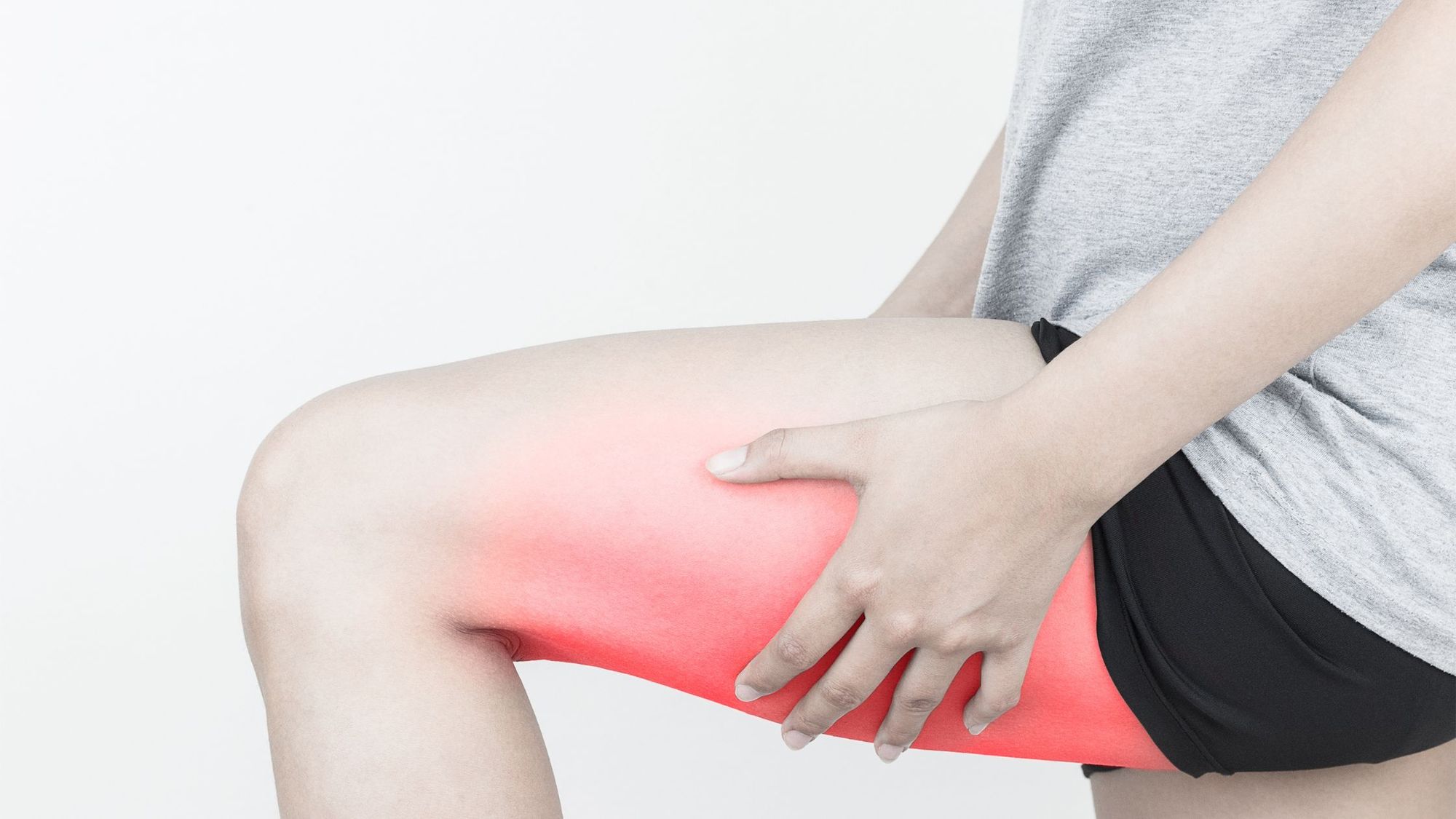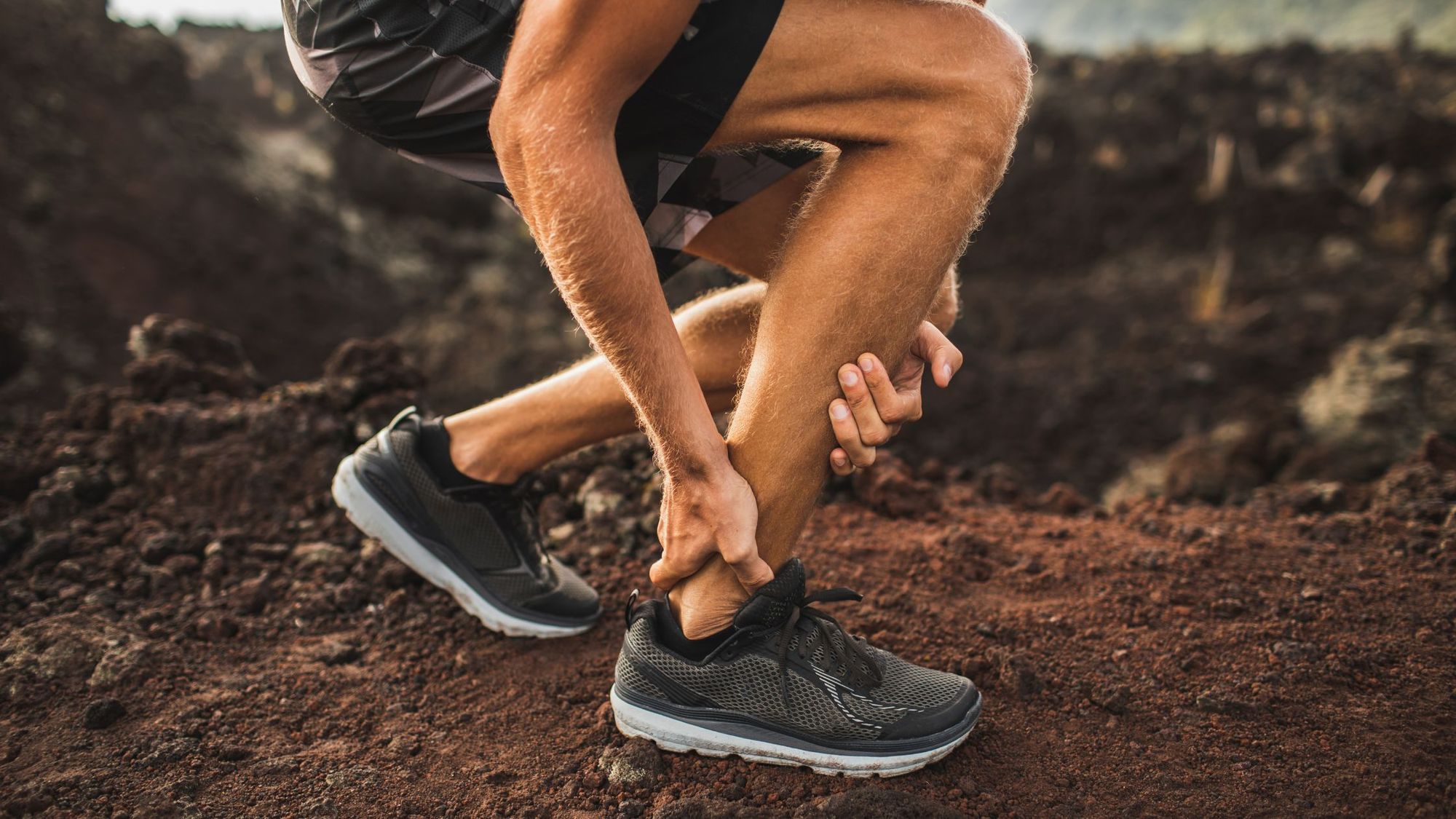
While running is a great way to stay fit and elevate your mood, there are also several common running injuries that you need to be aware of. It’s important to be prepared for anything, because regularly running means you are at higher risk of sustaining an injury. Many of the common running injuries are fairly minor, but some can be serious. Taking care of yourself and working to try and prevent injury is key.
Because running is a high-impact exercise that is hard on the joints, an injury from running is more common than injuries from low-impact exercises such as aqua jogging.
The vast majority of running injuries are caused by repetitive stress, and while injuries caused more suddenly are rarer, they still happen. In this guide, we will take you through some of the most common injuries you might sustain while running, as well as how you can prevent them, and any treatment options that might be available if the injury has already occurred.
12 Common Running Injuries
Studies have shown that the most common locations for running injuries are the knees, feet, and legs. This is perhaps unsurprising, especially considering that these parts of the body are used the most during this exercise.
Below are 12 of the most common running injuries.
1. Plantar Fasciitis
Plantar fasciitis, a foot pain condition, is not exclusive to running. Those who enjoy hiking or walking are also prone to this (I walk 7 miles per day and developed it quite severely). It happens when the base of the foot is irritated or degenerates from too much use.
This is because the layers of tissue act as a spring when you are moving, and too much walking or running puts a great deal of pressure on it. Some of the most common symptoms are:
- Pain throughout the heel or sole of your foot when you put weight on it (can be severe)
- Gradual pain that worsens over time
- Burning on the base of your foot
- Pain that gets worse in the morning
- Pain that remains for a period of time after movement or exercise
Plantar Fasciitis can take a long time to get better. Sometimes, custom orthotics for your shoes or special stretches and massages can help it get better.

2. Hamstring Injuries
This is probably close to the top of the most common running injuries, and if you have weak or very tight hamstrings, you will be more susceptible to injury. This injury is also more common in sprinters and fairly rare in distance runners.
You need to do hamstring stretches before and after a run.
For distance runners, those who end up with hamstring injuries have ones caused by strain and tears in the connective muscle that occur over time. Symptoms of hamstring injuries include:
- Pain that occurs in the back of your upper leg (usually dull)
- The hamstring is tender to touch
- Stiffness or weakness in the hamstring
It can take a few days or a few weeks for a hamstring injury to heal (depending on the severity or how badly you pulled the muscle). In this time, the best treatment is plenty of rest combined with ice packs to reduce swelling.
3. Anterior Compartment Syndrome
The cause of this injury tends to be when the muscles in the front of your leg start to put too much pressure on your blood vessels and nerves. This is a very severe syndrome and is classed as a medical emergency.
The symptoms to watch out for are:
- Intense pain, particularly when the muscle is stretched
- Tenderness of the area
- Tightness in the muscle
- Tingling and/or burning sensations
- Numbness or weakness (severe cases)
Treatment involves a surgical procedure that must be undertaken as soon as possible so that the pressure surrounding the muscles and blood vessels can be relieved. It can take weeks or months to recover afterwards.

4. Achilles Tendinitis
This injury occurs when the tendon that connects your heel and your calf becomes inflamed. Usually, this happens when your running becomes more intense or you increase the distance that you run each session.
The main risk with this injury is that if it is left untreated, it can lead to the tendon being torn. If this happens, surgery is usually needed to fix it. The symptoms to look out for are:
- Pain above your heel
- Swelling of the Achilles tendon
- Limited movement and range of motion for your foot
- Warm sensations over the tendon
- Pain walking
The best treatment for this is rest and stretching. You should keep your foot rested for 2-3 days and also use an icepack to help reduce the swelling. Stretch your calves, feet and achilles with guided stretches from your physiotherapist.
Risk of achilles injury is often genetic. Many people have genetically tight achilles tendons or a higher risk of injury due to their DNA. Find out your injury risk and optimal workout routine based on your genetics by taking a CircleDNA test.
5. Bursitis
Sacs of fluid tend to be found under your muscles and tendons, and they are there to lubricate your joints and ensure everything runs smoothly. Bursitis is caused by repeated friction against the sacs while you’re running, causing irritation to your hips and knees.
The main symptoms are:
- Severe joint pain (sometimes disabling)
- Swelling and redness in the affected area
- Bruising of the affected area
- Sharp pain when moving or exercising
Treatment involves resting for a few weeks and applying an ice pack to the affected area. You may also be prescribed painkillers and can take over the counter ones if desired.
6. Calf Strain
Another one of the most common running injuries, this injury tends to occur due to repetitive stress and strain on the calf, also known as a pulled calf muscle.
With this injury, the symptoms tend to be:
- Difficulty tensing your calf
- Difficulty standing on your toes
- Pain and swelling
- Popping sensation in the calf
Treatment tends to involve rest and an ice pack for a few days. In most cases, recovery takes up to a week, but it can take longer, depending on the severity of the strain.
7. Shin Splints
This injury causes pain to run along your shinbone area, which usually happens when you start running more often too quickly – doing it all at once instead of increasing slowly. It is also more likely to happen to those who primarily run on hard surfaces.
The symptoms to look out for tend to be:
- Dull pain anywhere along your shinbone
- Pain that worsens with exercise
- Shinbones are tender to touch
- Swelling (usually mild)
The best treatment is a lot of rest and cutting back on how much you run so that you can build it up gradually. They can turn into stress fractures if you don’t rest, so staying off your feet for a few days is important.
8. Stress Fractures
These are hairline cracks in the bone that form after increased repetitive stress or impact. They can occur anywhere in the body, but they are most commonly found in the legs and feet of runners.
The common symptoms of a stress fracture are:
- Pain that worsens over time
- Swelling and tenderness of the area
- Bruising of the area
It is important to see a doctor immediately and get X-rays if you think you might have a stress fracture. It can take up to 8 weeks to recover, and you may have to wear a cast or use crutches during this time.
9. IT Band Syndrome
For those who don’t know, the IT Band is a piece of connective tissue that runs from your outer hip to your knee. It works by stabilizing your knee when you move, even if you walk slowly.
IT Band syndrome is usually caused by the IT Band rubbing against the leg bone because it is tight, and weak gluteal muscles and hips can also contribute to this. The symptoms to look out for include:
- Sharp pain on the outside of your leg
- Tender to touch the IT band area
- Pain that gets worse when you bend your knee
It is very easy to treat with plenty of rest (and an icepack). Your doctor may also prescribe you pain relief and anti-inflammatories to help with recovery.
10. Runner’s Knee
Runner’s knee is an injury common in those who do a lot of running and jumping, and it is an injury caused by overuse. If you have weak hips or knees, this increases your risk of developing this injury.
The symptoms of runner’s knee all occur in the knee and range from:
- Dull pain in one or both of your knees
- Pain that can go from mild to extreme
- Pain that worsens when sitting
- Pain that worsens when exercising
Treatment for runner’s knee involves physiotherapy, and the plan you use will be laid out by your physiotherapist.
11. Meniscal Tear
This happens when there is damage (a tear) to the cartilage surrounding your knee. It can feel like your joint is locking and is caused by repetitive stress to the area.
The symptoms of a meniscal tear include:
- Swelling and stiffness
- Pain in the knee
- Difficulty straightening your knee
Rest and painkillers are the best treatment for this injury. It can take a few weeks to heal properly, and if it’s not treated and gets worse, it could end up needing surgery to fix.
12. Sprained Ankle
This is a very common injury that is caused by overstretching your leg and ankle, usually because you are doing too much too soon. They commonly happen when you land incorrectly on your foot and end up rolling your ankle.
The signs to look out for include:
- Discolouration of the area
- Pain around your ankle
- Swelling and redness
- Bruising of the area
- Limited range of motion
The best treatment for a sprained ankle is a lot of rest, time, and patience. In some cases, you might need physical therapy to heal fully. It can take weeks or months, depending on the severity.
How to Prevent Running Injuries
If you want to prevent running injuries, there are preventative measures you can take to reduce your chances of sustaining one. This includes:
- Always warm up before you exercise, including stretches
- Pace yourself and increase your running distance slowly
- Rest often, especially if you start feeling discomfort
- Make sure you are using the correct running techniques
- Improve the strength and stability of your hips
- Run on soft surfaces where possible
- Try cross-training to train your body
- Cool down and stretch after your run
To Conclude
We hope that this guide has been able to help you learn more about the most common running injuries and how to take care of yourself in order to treat and prevent them. It’s important to stay safe while running, so invest in some good shoes, pace yourself, and take care of your body.
If running injuries are occuring often, consider switching to low-impact forms of cardio such as cycling, swimming, or aqua jogging.
References:
- NCBI, Injuries in Runners; A Systematic Review on Risk Factors and Sex Differences: https://www.ncbi.nlm.nih.gov/pmc/articles/PMC4338213/
- NCBI, Preventing running-related injuries using evidence-based online advice: the design of a randomised-controlled trial: https://www.ncbi.nlm.nih.gov/pmc/articles/PMC5530119/







Comments are closed.